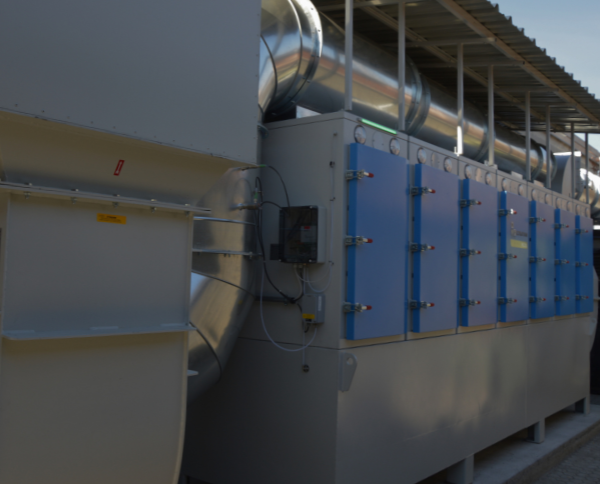Treatment of volatile organic compounds in the food industry.
This case study describes the collaboration with a Swiss sugar producer. The company has the capacity to process up to 10,000 tons of sugar beets during late autumn, after which it focuses on other processes, such as packaging for retail sale, throughout the year. To purify the contaminated air generated by the production line, the company used a biofilter. However, this device had become obsolete and could no longer meet the required filtration capacities.

Problems
- Need to replace the obsolete biofilter, which was unable to meet the required filtration performance and comply with emission limits.
- Spread of unpleasant odors due to the storage and fermentation of sugar.
Technical features BIOFILTER
- Closed-bed biofilter 2,000 Nm3/h
- Stainless steel structure
Biofiltration is an emission treatment process based on biochemical oxidation carried out by microorganisms. In this case, it proved to be the ideal solution for addressing the issue of unpleasant odors. The structure is made of organic materials such as peat, bark, or soil, which allow microorganisms (fungi, bacteria, and yeasts) to purify the contaminated air.
- Degradation of plant material by 10% per year.
- Use of natural filling material.
- Low costs for filling material.
- Almost zero disposal costs, as microorganisms feed on the pollutant.




